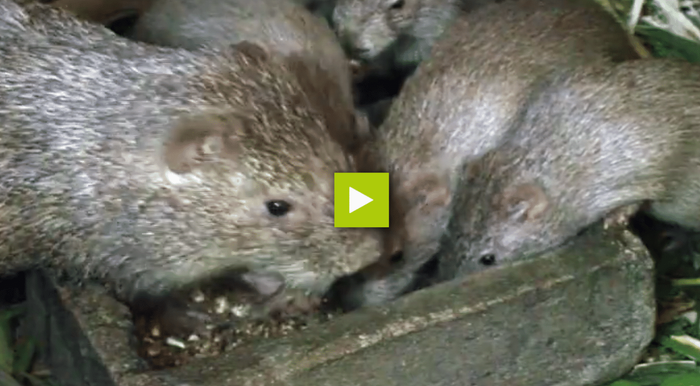The grasscutter is a newly domesticated bush rodent, many Africans enjoy eating its meat. Grasscutter farming is a good income generating activity as it does not require a big investment.
For successful raring a good habitat, monitoring of the animal carefully and provide a balance diet is necessary. Their diet is primarily fodder based that includes perennial grass such as panicum, pennisetum which can be harvested from the wild or cultivated. Palm leaves, cereals, stems and groundnut plant.
Grass and fruits
Diet can be supplemented with peaces of unripe fruits such as papaya and mango. Ripe fruits to be avoided as they cause diarrhea and bloating. Sugarcane, grass roots, cassava and yams cut into pieces can be added too. Care should be taken while feeding cassava, as some are bitter and poisonous. Cages must be cleaned and grasscutters fed a good amount of fodder every morning, midday and late evening. Tubers and sugarcane should be limited as it affects growth and teeth of grasscutters.
Concentrated Feeds
Home made concentrated feeds are made by mixing maize greens, oil, wheat bruns and salt. These feeds are added with pieces of tubers, unripe fruits and water as it is easier for the animal to eat.
Concentrated feeds help grasscutters to give birth to stronger younger ones, better growth and they stay healthy. Floor concentrated feeds lead to respiratory problems.
Harvesting fodders
Harvesting to be done in the afternoon because morning dew carry parasites. Harvested fodder is kept for some time before it‘s fed to grasscutters, this helps prevent illness such as diarrhea caused by parasite in wet fodder.
Identifying mature fodder
Grown fodder which has sufficient fibre content should be harvested. Grown panicum has flowers, it‘s stem is hollow when it‘s cut. For pennisetum, it‘s ready when it‘s stem is seen and leaves fed to grasscutter.



















